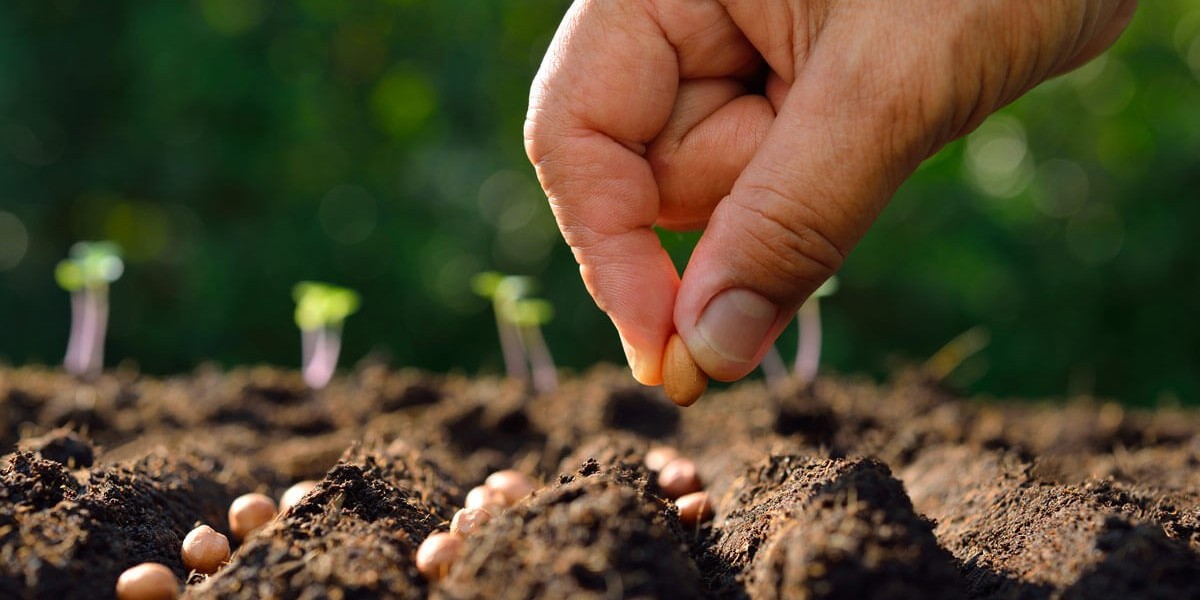The Essential Guide to Growing Your Own Vegetables from Seeds
Growing vegetables from seeds is one of the most rewarding gardening activities. It allows you to enjoy the full process, from nurturing tiny seedlings to harvesting fresh produce. Plus, it’s a cost-effective and satisfying way to get high-quality vegetables on your table. Whether you're a seasoned gardener or just starting out, understanding how to plant and care for vegetable seeds is key to a successful and fruitful garden.
In this article, we'll explore everything you need to know about growing vegetables from seeds. From the types of seeds available to the steps involved in planting and caring for them, this guide will help you create a productive vegetable garden right in your backyard.
1. Why Grow Vegetables from Seeds?
Growing vegetables from seeds offers numerous benefits over buying seedlings from nurseries. Here are a few reasons why you might choose to grow your vegetables from seeds:
- Cost-effective: Seeds are often much cheaper than purchasing fully grown plants. A single packet of seeds can yield dozens of plants, providing better value for your money.
- More variety: When you shop for seeds, you’ll have a wide selection of vegetable varieties, including heirloom and rare types, which may not be available as seedlings.
- Healthier plants: Growing from seeds allows you to control the conditions from the very beginning, ensuring healthier plants that are better adapted to your garden environment.
- Satisfaction: There’s something incredibly rewarding about watching your plants grow from tiny seeds into lush, productive plants.
2. Choosing the Right Seeds
Choosing the right seeds is the first step in successful vegetable gardening. The kind of seeds you pick will largely depend on your climate, the available space, and your personal preferences for the types of vegetables you want to grow.
Factors to Consider When Choosing Seeds
- Climate: Not all seeds are suited to every climate. Some vegetables thrive in cool conditions, while others need warm weather. Look for seeds that are suitable for your region's growing season.
- Growing season: Consider the length of your growing season when selecting seeds. Some vegetables have a short growing period and can be harvested quickly, while others may need a longer season to mature.
- Space: If you have limited space, you might want to choose seeds that grow compact plants, such as bush varieties of beans or dwarf tomatoes.
- Heirloom vs. hybrid: Heirloom seeds are open-pollinated and tend to produce plants with better flavor and unique characteristics. Hybrid seeds are bred for certain traits, like disease resistance or higher yields.
3. Preparing to Plant Your Seeds
Once you've selected your seeds, it’s important to prepare the soil and your planting space. Healthy soil is essential for good seed germination and strong plant growth.
Preparing the Soil
- Test your soil: Start by testing your soil to ensure it has the right pH level and the necessary nutrients. Most vegetables prefer slightly acidic soil with a pH between 6.0 and 7.0.
- Amend the soil: If your soil is lacking in nutrients or has poor structure, amend it with organic matter such as compost or well-rotted manure. This will help improve drainage, retain moisture, and provide essential nutrients to your growing plants.
- Clear the area: Remove any weeds, rocks, or debris from your planting area. Weeds can compete with your seeds for nutrients and water, so it’s important to start with a clean slate.
Starting Seeds Indoors vs. Direct Sowing
Some seeds are best started indoors, while others can be sown directly into the garden. Understanding the difference is crucial for ensuring a good harvest.
- Starting indoors: Vegetables like tomatoes, peppers, and eggplants benefit from being started indoors in trays or pots. This gives them a head start, especially in regions with short growing seasons.
- Direct sowing: Seeds like beans, carrots, and radishes can be sown directly into the garden once the soil has warmed up. These plants don’t transplant well and grow best when started in their final location.
4. Planting Your Seeds
When it comes time to plant, be sure to follow the instructions on the seed packet. Different seeds have different needs when it comes to depth, spacing, and sunlight.
How Deep to Plant
A general rule of thumb is to plant seeds at a depth twice their size. For example, larger seeds like beans should be planted deeper, while tiny seeds like lettuce should only be lightly covered with soil.
Spacing Your Seeds
Proper spacing is crucial for giving each plant enough room to grow. Overcrowding can lead to poor air circulation and competition for resources, which can make your plants more susceptible to disease.
- Thin seedlings: After your seeds sprout, you may need to thin out the weaker seedlings to prevent overcrowding. Be sure to follow the spacing guidelines on the seed packet.
Watering
Watering is one of the most critical aspects of seed care. Newly planted seeds need to be kept moist until they germinate, but overwatering can cause them to rot.
- Keep the soil moist: Gently water the soil after planting, being careful not to wash the seeds away. Keep the soil consistently moist, but not waterlogged, until the seeds germinate.
- Use a fine spray: A fine mist or spray bottle is ideal for watering seedlings to avoid disturbing the soil and seeds.
5. Caring for Your Vegetable Seedlings
Once your seeds have germinated and sprouted, they’ll need proper care to continue growing into healthy, productive plants.
Light
Seedlings need plenty of light to grow strong and healthy. If you're starting seeds indoors, place them in a sunny window or under grow lights.
- Rotate plants: If you're growing plants on a windowsill, rotate them regularly to ensure even growth on all sides.
- Harden off seedlings: Before transplanting seedlings outdoors, gradually expose them to outdoor conditions to prevent shock.
Watering and Fertilizing
- Water regularly: As seedlings grow, continue to water them regularly, keeping the soil evenly moist. Avoid letting the soil dry out completely.
- Fertilize: After a few weeks, begin fertilizing your seedlings with a diluted liquid fertilizer to promote strong growth. Be careful not to over-fertilize, as too much can harm your plants.
6. Transplanting and Growing Vegetables Outdoors
Once your seedlings are strong enough, or if you’ve directly sown seeds into the garden, it's time to care for them as they grow into mature plants.
Transplanting Seedlings
If you started your seeds indoors, transplant them to your garden after they’ve developed several true leaves and the outdoor conditions are suitable.
- Choose the right time: Transplant your seedlings on a cloudy day or in the late afternoon to minimize transplant shock.
- Water well: Water the seedlings immediately after transplanting to help them settle into their new home.
Mulching and Weeding
Mulching around your plants helps conserve moisture and suppress weeds, which can compete with your vegetables for nutrients. Keep your garden free of weeds to ensure your plants have the best possible chance to thrive.
7. Harvesting Your Vegetables
Harvesting your vegetables is the ultimate reward for your hard work. Knowing when and how to harvest is crucial for getting the best-tasting produce.
- Harvest at the right time: Vegetables like lettuce and radishes should be harvested while young and tender, while others like tomatoes should be fully ripened on the vine.
- Use clean tools: Always use clean tools when harvesting to prevent the spread of diseases.
Once your plants start producing vegetables, you’ll enjoy the fruits (and vegetables) of your labor. From fresh salads to homegrown soups, the possibilities are endless.
Conclusion
Growing vegetables from seeds is a fulfilling and economical way to enjoy fresh, healthy produce. By following the steps outlined in this guide, you can ensure a bountiful harvest and the satisfaction of knowing exactly where your food comes from.
Whether you’re planting tomatoes, carrots, or lettuce, understanding the basics of soil preparation, seed planting, and plant care will give you the best chance for success. And remember, patience is key—gardening is a journey, and watching your plants grow from tiny seeds into thriving vegetables is a rewarding experience. Just once, make sure to include vegetable seeds in your gardening plans, and you'll discover the joy of homegrown produce.
Happy gardening!







